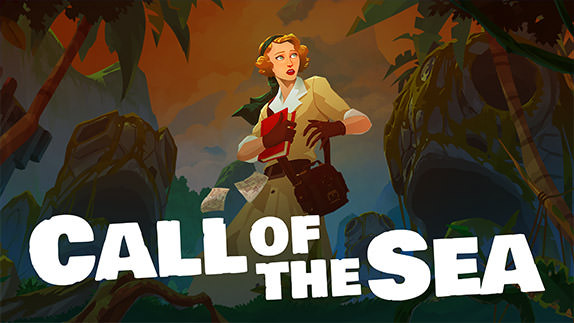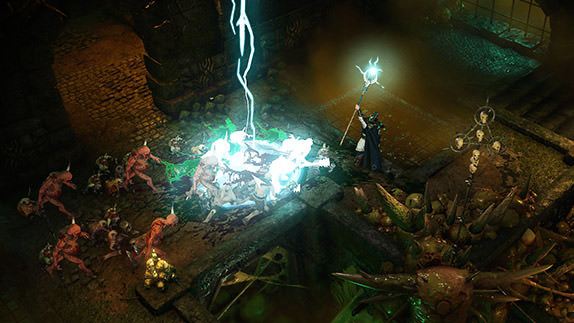Space Rift - Episode 1 Review

 By Kevin Mitchell
Posted on December 8, 2016
By Kevin Mitchell
Posted on December 8, 2016
A fading memory, a desert wasteland, a shell of its former self, Earth has lone been abandoned after a catastrophic meteor shower planted the Blue Planet. With it, humanity has relocated to the closest nearby rock; Mars. Under the guise of mankind's saviors, citizens live in fear of the mega corporations that control every aspect of their lives; Weyss and Pandora. After a routine mining expedition goes awry and a computing error labels you a traitor by Pandora, protagonist Casey Black has no other option by to join the rebels fighting for humanity's salvation.
Space Rift - Episode 1 isn’t an overly lengthy experience, lasting anywhere from 2-3 hours, depending on your tendency to complete all of the optional objectives in each of the game’s five main missions. In between missions, you are free to interact with the two other rebellion characters located on the space station. One acts as the tough, and rugged pilot that doesn’t trust you, and the other as the scientist with the plan to save all humanity.
You navigate the station by aiming your head towards set points located around the bridge and hanger sections of the base, warping you to the location instantly. Casey will talk to himself, admiring the views of the deepest reaches of space, and question his involvement in combating the corporations. There are no turning options, and you are limited to using the DualShock 4 for navigation inside the base and when piloting your spacecraft. I found the spots you can warp to are not easily navigable, forcing you to contort your neck and spin entirely around to view the rest of the room. Heck, I ended up taking my PlayStation VR headset off and turned it in my hands to navigate instead.
There are optional dialogues you can have before heading towards the mission briefing, and there are plenty of upgradeable components to your ship. Credits are earned by mining, namely an optional objective, but the additional time in space is well worth the effort. By default, your ship, isn’t as powerful as those you will be pitted against and is much slower and less agile. You’ll want to upgrade the engines first, both acceleration and top speed. When flying, you will almost use your boost constantly, only easing off to let it cool down before holding the trigger once again. The further you progress through the game, the more options you are giving for your loadout, from your primary weapon, to secondary missile types. Most enemy ships only require a couple of hits or a perfectly placed shot to explode, so I found the default primary weapon to work the best. Homing missiles were a complete waste of time, as they didn’t seem to track enemies at all.
Throughout the missions, enemy ships appear in timed waves, except when required for heavily scripted narrative moments. Dogfighting is disappointing, and you are better off cutting your engines and trying to shoot them down without moving. Considering they are incredibly fast, and move in such a jerky fashion, it's impossible to have an engaging encounter. There is no limit to the angle of your weapons, so as long as you can see them through your cockpit, aiming with your head, you can fire upon them. Various panels and menus flank you on all sides inside your ship, giving you easy access to mining controls, your radar, and weapons loadout. Some of the other capabilities are more troublesome to use.
Your ships wimpy flashlight, which requires you to be right on top of things is located directly above you, along with the option to engage your weapon drive and proximity scanner. I found I needed to angle my neck completely upwards and even shift myself backward a bit to target them, making the experience entirely uncomfortable. Unless the game wouldn’t advance without their use, I ignored them completely for my well-being. Other times, you are guided through the process of completing a task through your ship's intercom, but I found myself more often than not unable to follow. At one point, I was frantically looking for wires to rip out of my ship, and only happened to find you need to look at both sides of your chair, and another required multiple steps to engage an EMP blast. For one reason or another, I couldn't locate the context areas around the cockpit to complete the actions. Either listing the steps on one of the monitors surrounding me or even highlighting things to interact with would be a huge improvement.
The mining mechanics are satisfying, requiring multiple steps and plenty of user interaction to receive the most resources. Probes must be sent to scan asteroids, showing you the resource composition and density for each resource. Missions are littered with these asteroids, allowing you to select ones that are rich with resources and ignore those that aren’t worth your time. Once a probe attaches to the surface, it launches an explosive into the inner core. Unless you manually detonate, it will continue its journey to the center of the asteroid before exploding.
Space Rift - Episode 1 looks much better inside the VR headset than on the shared social screen. Characters have an almost cel-shaded art style, but the proportions inside the space station seem off. Your character appears to be a giant, towering over others and everything else, including terminals and railings. I don’t think I should be able to see the very top of character heads, and recentering my position doesn’t fix the issue. Another weird design choice is the lack of pausing while playing. The options button will only recenter your view if held down but simply clicking it will do nothing. Even hitting the PlayStation button on the controller won’t pause the game, instead of continuing the game as you browse the PS4 Store or message a friend.
Loading times between missions feel unbearably long, though it may just be a side effect of staring into emptiness, as there aren't any loading menus in the game. In fact, there are times I thought the game froze, as there is no indication that anything is loading in the background. On the plus side, all of the in-game text is completely legible, something I can’t say the same about many games on the platform. All of the game’s dialogue is entirely voiced, but some of it, namely the main protagonist and your AI companion don’t sound as crisp as the other two characters. The AI partner, which is only around for the early portions of the game has a weird distortion sound effect attached t o it, making it seem like there were issues with the sound outputting from the game.
Simply Put
Space Rift - Episode 1 is an ambitious space adventure title, but developer Vibrant Core falls short on the execution of their first game. Although relatively short, and lacking any reason to return, I did enjoy the mining aspect much more than the combat. The constant waves of enemies were more a nuisance, and I wish the game did away with the majority of combat encounters. Exploring derelict ships, salvaging abandoned equipment, and mining resources from ice-encrusted asteroids were much more enjoyable aspects of the game.
Note: Space Rift - Episode 1 was reviewed on PlayStation VR. A digital copy of the game was provided by the publisher/developer.




